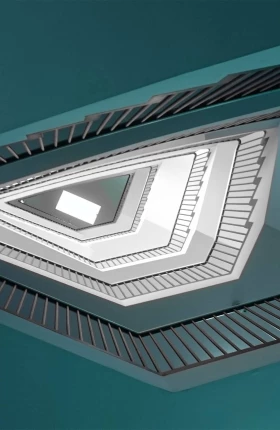For the CEO
A message from our editor on this critical topic.
What’s in Play
A tariff-impact command center is a rapid-response, cross-functional capability to simulate, monitor, and steer businesses through trade uncertainty. Here’s how CEOs can launch and leverage this capability to mitigate tariff risks and turn volatility into a competitive edge.
What’s at Stake
The need for a sophisticated tariff-impact strategy is urgent. Levy increases on all US trading partners and subsequent retaliatory tariff announcements by China and other nations (amid evolving deals and tariff pauses) impact approximately $1.8 trillion worth of traded goods.
CEOs who stand up a command center now can protect hundreds of millions of dollars in revenue and profits against potential tariff fallout. (See “The Results of Command Centers Speak Volumes.”) Moreover, the speed, price, cost, and other response options a command center reveals will translate into competitive advantage.
The Results of Command Centers Speak Volumes
- A do-it-yourself retailer protected $350 million to $500 million in profits by designing a mitigation strategy for priority product categories. The dedicated, full-time staff at its command center developed four scenarios for how tariffs would impact different categories of goods assembled in Mexico, China, Europe, and the US. It assessed its cost of goods, product assortment, procurement, merchandise financing, pricing, and logistics. Among other things, this enabled the company to adjust its vendors and pricing.
- A global medical device manufacturer was able to mitigate 80% of the projected impact on its revenues in the near term and 95% of its long-term risk exposure. The company achieved this by mapping the financial and operational risk tied to geopolitical uncertainties. The manufacturer made immediate moves and implemented a mitigation strategy that was aligned with spending priorities over five years. The company also established a mechanism to track ongoing geopolitical risks.
- The command center of a consumer goods brand protected $60 million in profits by focusing on the company’s most exposed business unit, assessing the material impact of tariffs compared to its peers, and following a trigger-based implementation roadmap.
What the Numbers Say
The Tariff Command Center
Think of the command center as a corporate “situation room,” complete with charts and computer dashboards tracking metrics and developments around the world in real time and simulating their impact. It has five key missions:
- Prepare the organization by developing tariff-impact scenarios and identifying swift, data-driven actions in response to policy changes as they unfold.
- Help the C-suite engage with policymakers to shape or reshape new tariff rules.
- Improve real-time compliance with trade policies around the world.
- Refine the company’s commercial offerings in response to rising costs by adjusting pricing, product mixes, marketing strategies, inventory management, and sourcing.
- Reconfigure the supply chain and global sourcing footprint by identifying and certifying alternative suppliers and manufacturing locations.
The command center operates over three time horizons: the here and now, then over the next three months, followed by another six months or more.
Phase 1: Setting Up and Mobilizing the Command Center. Establish a command center to assess the implications of existing and potential trade policies on key business units and products, monitor developments in real time, and prepare a rapid response strategy.
During the mobilization stage, which typically takes around two to three weeks, the command center develops potential tariff scenarios with high-level implications based on policies, the company’s global sourcing footprint, and the geopolitical dynamics reshaping trade flows. The team conducts a tariff diagnostic and mitigation sprint under each scenario. It assesses the risk exposure of key business units and products, and then models the impact on landed costs, profit margins, market share, and major capital investments. Modeling the impact on competitors and determining whether the tariffs give your company an advantage or disadvantage is critical. So is identifying potential actions the company can take under each scenario, including high impact moves that can be implemented quickly.
The command center can help drive a communications strategy, equipping leaders with compelling fact bases and arguments as they engage with policymakers to reshape or postpone tariff changes—or seek exemptions. The center also supports communications with stock market analysts, media, unions, and other stakeholders.
- The first step: Assemble a cross-functional, dedicated—not designated—team and establish a workspace. The risk with designated team members is that they must also focus on their normal work, which can pull their focus and make it harder for them to prioritize. Because tariff shifts affect the entire organization, team members should include staff from strategy, operations, sourcing, manufacturing, commercial, legal, distribution, and other functions. They should have a clearly defined governance framework, roles, and responsibilities. They should also report regularly to the CEO and other top executives to ensure the entire organization is aligned and barriers are broken down. We recommend operating the command center in a dedicated physical space with easy access to the C-suite. Having all team members in the same place promotes agile, orchestrated action as events unfold. It also facilitates real-time collaboration.
Stay ahead with BCG insights on international business
Phase 2: Developing a Tariff Strategy Assessment. In this phase, which generally takes six to eight weeks, the team expands its analytical scope to more business units and products. The center identifies and validates short-, medium-, and long-term actions to mitigate the impact of tariffs and pursue opportunities under each scenario.
Immediate actions could include adjustments to inventory, pricing, and global sourcing, as well as processes for real-time compliance with evolving trade policies. If an item is produced in the US or tariff-exempt, for instance, documentation to verify it must be readily available and submitted quickly.
The center can also help develop a response plan for longer-term moves, such as exploring alternative vendors and sourcing locations.
- The first step: Prioritize response actions based on their feasibility and strategic impact. Start with a granular analysis of high-volume, high-revenue products, down to the SKU level (the tariff impact on a wall-mounted lamp can be very different from a chandelier, for example). Rerun simulations as the trade context evolves. Use the center to assess the validity of all incoming requests from suppliers to evaluate prices attributed to tariffs—and challenge them if necessary. Rather than focus narrowly on the unit price, model the total cost of ownership of an item, including payment terms, logistics, warranties, and service levels. Leverage the center to develop ways for the firm to work with suppliers to mitigate tariff impacts across the value chain.
Phase 3: Designing a Longer-Term Implementation Roadmap. In this phase, the center will produce an action plan to build enduring resilience and agility into supply chains. Many of these actions are more challenging and will take longer to implement than earlier “no regret” moves. These include renegotiating with suppliers to share costs or switching suppliers and manufacturing locations to either a domestic location or offshore. For key suppliers, the center moves beyond transactional engagement to collaborate on initiatives to remove costs (for example, by redesigning products or incorporating different materials). The center helps reconfigure supply chains as needed and assess potential mergers or acquisitions. It can also explore whether it makes sense to manufacture at multiple sites to mitigate risk or alter the product portfolio.
- The first step: Identify a “momentum scenario” that projects the impact of tariffs and other trade policies based on an analysis of current trends. Start planning accordingly. Because momentum can shift quickly, however, the team must also develop alternative scenarios and signposts. This will provide forward visibility should the alternative scenarios materialize. Based on the momentum scenario, the command center team will map out potential medium- and longer-term strategies, including specific actions or projects, with owners, timelines, and milestones. The team will identify “trigger” events or market signals for initiating action and establish KPIs to monitor the tariff impact and mitigation efforts on an ongoing basis.
A Parting Thought
The tariff storm has arrived and is hitting the bottom line with full force. Companies still waiting for the tempest to pass are getting outmaneuvered by competitors who are building resilience, locking in margins, and helping to shape policy. With an effective command center, companies can defend themselves against the negative impact of shifting tariffs, build more resilient businesses, and use this period of volatility to hone their competitive advantages.




